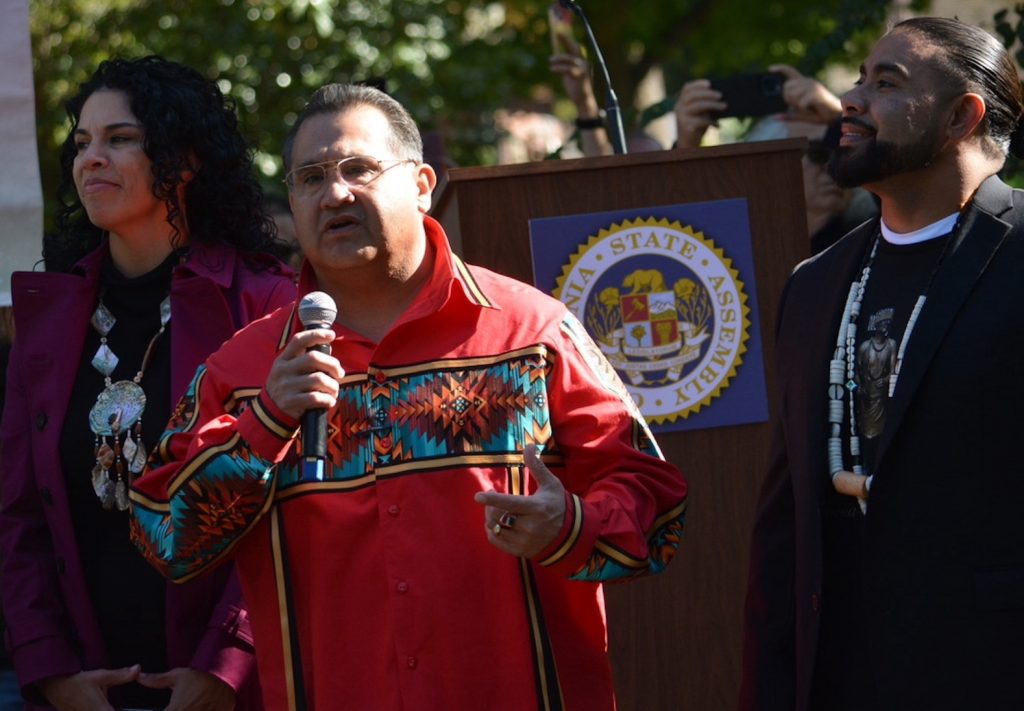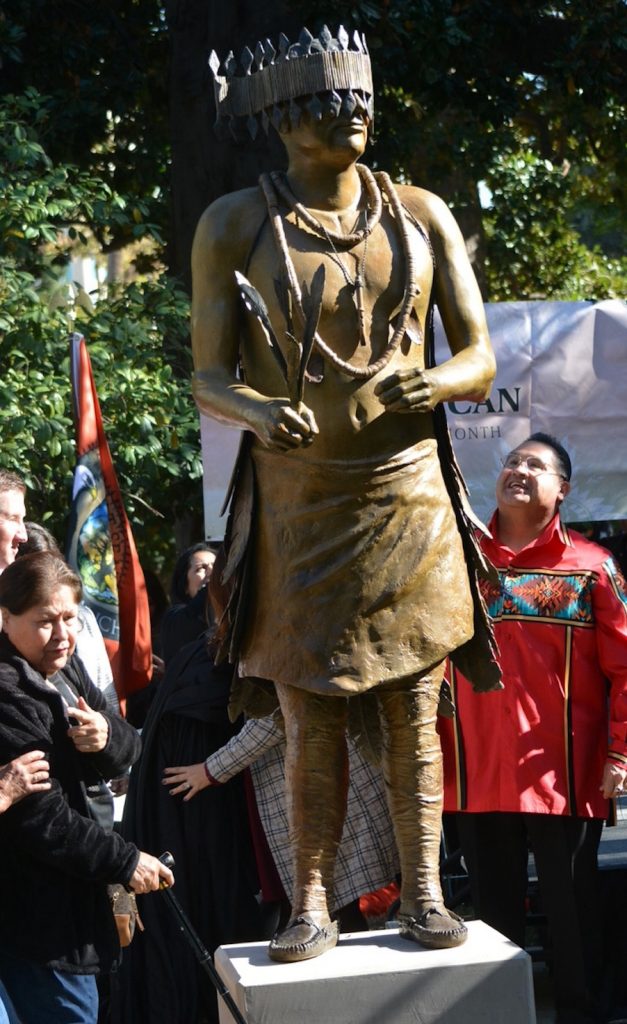
California has erected an eight-foot statue honoring Miwok elder William “Bill” Franklin, and 338 Native American tribes. Located on the grounds of the State Capitol in Sacramento, it is the first official monument honoring Native American heritage at the historic building where the Legislature convenes and where Gov. Gavin Newsom has his primary office.
Over 500 tribal members, dignitaries and students witnessed the unveiling of the statue last week.
“On this historic day, here on Nov. 7, the California people will have a monument on the Capitol grounds for all those visiting to see that we are still here,” said Assemblymember James C. Ramos (D–San Bernardino), who presided over the event.
Related Links:
https://lasentinel.net/university-returning-1500-artifactsa-to-oneida-indian-nation.html
“We’re still here against great odds, odds we’ve seen our people go through, many historical challenges in the state of California. We’re still here because of the resilience of our elders and ancestors,” continued Ramos, chairperson of the California Native American Legislative Caucus.
Ramos said the monument is representative “resilency” of the indigenous people and how they are still “much ingrained in the thread of the state of California.”

In 2020, on the Fourth of July, about 200 protestors gathered at the State Capitol to denounce the death of George Floyd and demand racial justice, police reform and equality for Black people. During that demonstration, protestors toppled a statue of Saint Junípero Serra (Miguel Jose Serra), a Spanish Franciscan Catholic priest, which was installed in 1967 and stood on the northeast side of the building.
The new bronze statue of Franklin celebrating California’s indigenous heritage replaces Serra’s on land that was once owned by Native American tribes. The monument is the 10th addition to a park that memorializes California’s firefighters, veterans, and public safety officers.
In 2021, Ramos authored Assembly Bill (AB) 338 in 2021, which authorized the monument.
Ramos is the first Native American Californian elected to the legislature since California obtained statehood in 1850. AB 338 was signed into law by Gov. Gavin Newsom in September 2021. In November 2022, a groundbreaking ceremony for the installation of Franklin’s likeness was held at the same location.
“This unveiling signifies the start of a new era at the California State Capitol,” said Jesus Tarango, chairman of Wilton Rancheria, a federally recognized tribe in Northern California.
“Every tribe across the state has their own Bill Franklin, a leader who fought to keep our cultures and traditions alive during a time where it was dangerous to do so. This monument serves to thank and honor each one of them,”
Six tribes from northern California supported Ramos’s legislation. Members of the Ione Band of Miwok Indians, Chicken Ranch
Rancheria, Barona Bandof Mission Indian, Wilton Rancheria, Tuolumne Band of Me-Wuk Indians, Buena Vista Rancheria of Me-Wuk Indians, and Shingle Springs Band of Miwok Indians made the monument and dedication possible.
Newsom says the construction of the statue action sends a powerful message from the grounds of Capitol Park to people across California. It underscores “the state’s commitment to reckoning with our past and working to advance a California for All built on our values of inclusion and equity,” Newsom stated.
Franklin was a Miwok Indian leader and cultural preservationist whose efforts conserved the history and promoted the Miwok and other Native American cultures, most notably, the traditional dances. He was born on Sept. 12, 1912, in Nashville, a town in El Dorado County. Franklin passed away on May 2, 2000.
The Miwok skirt dancer portrayed in the monument created by artist Ronnie Frostad is modeled after Franklin. The Miwok leader was responsible for building three “roundhouses” that are dedicated spaces for Native American ceremonies, songs, dances, and gatherings.
During the ceremony, cultural presentations by the Kalte Crew of Wilton Rancheria, Shingle Springs Traditional Dancers, and Tuolumne MeWuk Dancers were intermittently performed.
“This sort of recognition for our people is long overdue and represents an important step toward telling the true history of California,” stated Sara Dutschke, chairperson of Ione Band of Miwok Indians.
Efforts to replace Serra’s statue predated its unceremonious toppling during the Floyd protests. For years, various monuments commemorating the priest around the state had been the target of advocates, historians and activists, who said missions led by the priest beatified by Pope John II on Sept. 25, 1988, contributed to the displacement and destruction of Native American tribes in California.
“As Native Americans, we have been invisible, romanticized, minimized, or disparaged for centuries,” Ramos stated. “That is not easily or quickly undone. But I am proud to be Native American and proud to be a Californian.”
This California Black Media report was supported in whole or in part by funding provided by the State of California, administered by the California State Library.



